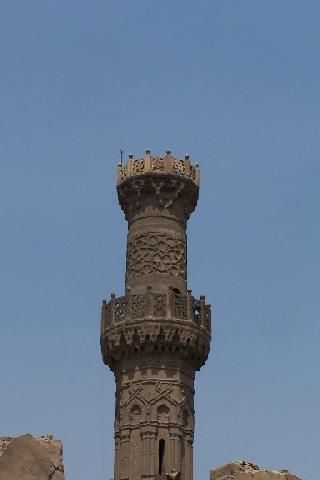Mosque of Khushqadam al -Ahmadi
The Mosque of Khushqadam El-Ahmadi lies in El-Seyufia Street that opens with the vegetable market. The mosque is close to the mosque of Sayyida Sakayna , one of the family members of Prophet Mohammed , which is regarded as one of the important mosques in Cairo. In the 14th century the building was the palace of Emir Tashtimur Dawadar, the executive secretary of Sultan Shaban who died in 1385. After that the building became a mosque in the days of Sultan Qaytbay on the hands of Emir Khushqadam El-Ahmadi. This Emir occupied many posts at that time such as the Chief of the Corps of Cupbearers, Wazir or minister, Great Treasurer, and Warden for the princesses in the period from 1468 to 1484.

In 1498, Sultan Qaytbay striped him of his wealth and power and exiled him to Sudan where he died. The courtyard of the mosque and the handsome decoration on its ceiling date back to the 14th century. This courtyard involves walls gracefully decorated with wide inscription band and stucco medallions and beautiful Mashrabiya galleries in its sides. The top of the Minaret, built by Emir Khushqadam, is destroyed now. The second corridor of the mosque was also established in the 15th century by Emir Khushqadam El-Ahmadi who placed his composite blazon there. The arches of the main aisle of the Qibla also were supplied with a convex collar.




